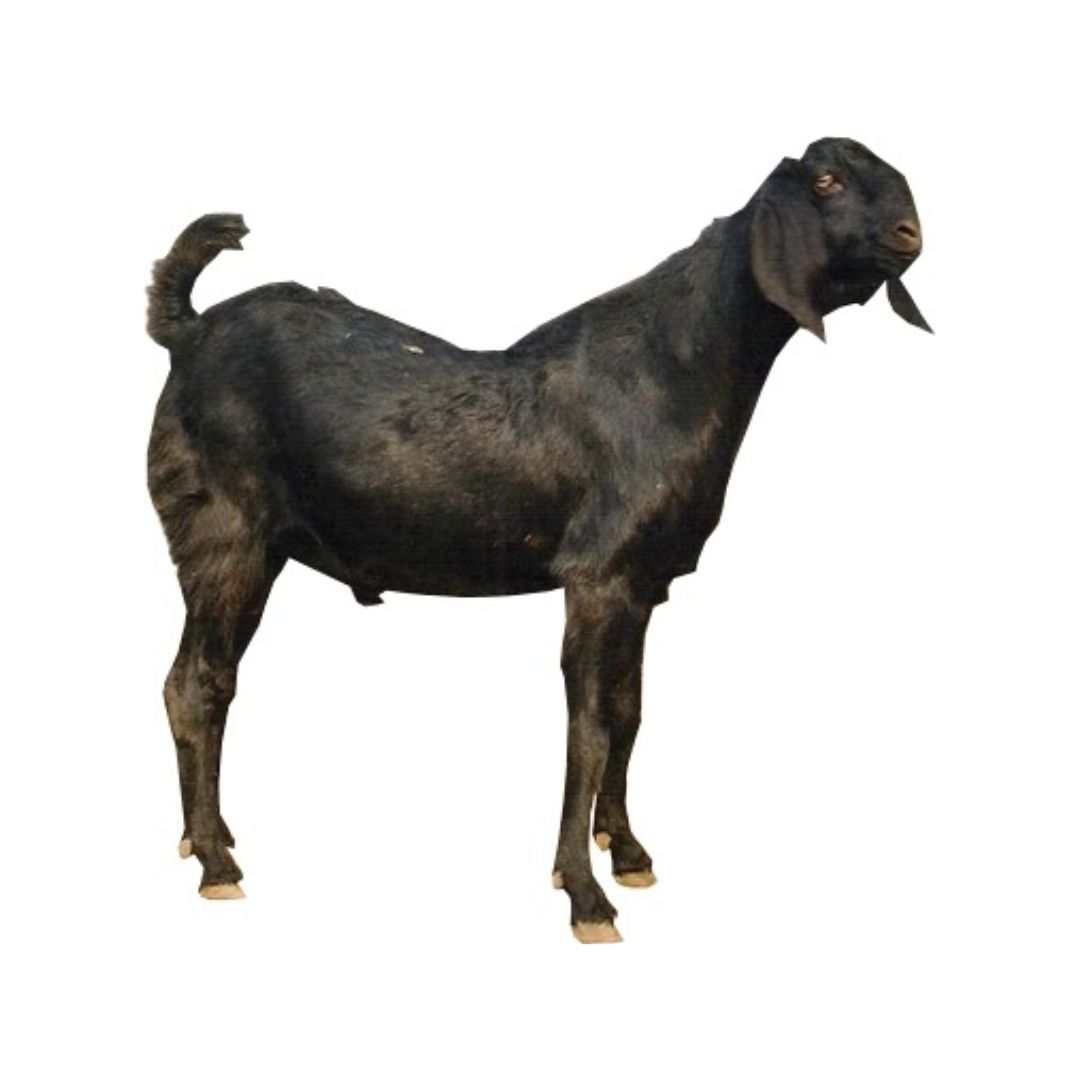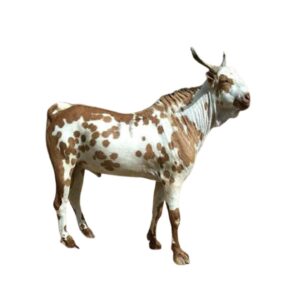Description
Physical Characteristics:
- Size: Small to medium
- Coat: Short, fine, and glossy
- Color: Predominantly black, although brown and gray variations exist
- Ears: Medium-sized, upright
- Horns: Usually absent in females; males may have small, twisted horns
Adaptability:
Black Bengal goats are highly adaptive, thriving in diverse agro-climatic conditions, including hot and humid environments. Their hardiness makes them well-suited for extensive and semi-intensive farming systems.
Breeding Characteristics:
- Fertility: High reproductive rate
- Twinning Rate: Commonly gives birth to twins
- Maternal Instinct: Strong maternal care and protective instincts
Milk Production:
While primarily a meat breed, Black Bengal goats also exhibit decent milk production. The milk is high in fat content, making them valuable for small-scale dairy purposes.
Meat Quality:
Black Bengal goats are renowned for their high-quality meat, characterized by tenderness, succulence, and a unique flavor. The breed’s ability to thrive on a variety of forages contributes to the quality of its meat.
Disease Resistance:
Known for their robust health, Black Bengal goats exhibit resistance to various common goat diseases. Their adaptability and hardiness minimize the need for extensive veterinary interventions.
Economic Significance:
- Meat Production: Black Bengal goats are a preferred choice for meat production, contributing significantly to the local and regional meat industry.
- Economic Livelihood: Many smallholder farmers rely on Black Bengal goats for income generation and livelihood support.
Conservation Status:
The Black Bengal goat is recognized for its unique genetic traits and adaptability, contributing to its conservation as a valuable indigenous breed.
Conclusion:
The Black Bengal goat, characterized by its small size, adaptability, and valuable contributions to meat and milk production, holds cultural and economic significance in the regions it inhabits. Efforts toward its conservation ensure the preservation of a breed that has thrived for generations.


